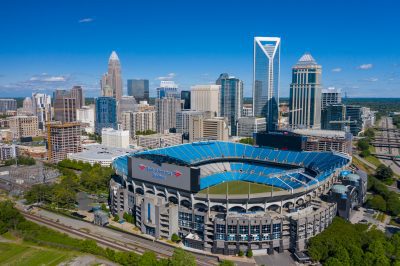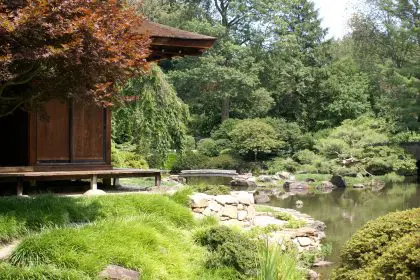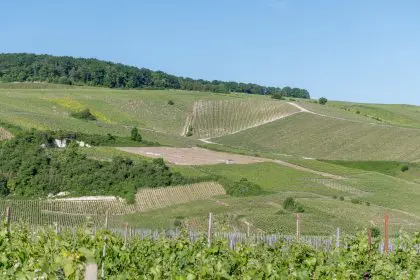Beyond the lively streets of New Orleans lies a hidden world of enchanting courtyards—intimate, verdant sanctuaries tucked behind ornate iron gates and historic façades. These secluded spaces represent the city’s unique architectural heritage, blending French, Spanish, and Caribbean influences into distinctly New Orleanian environments. While tourists flock to well-known courtyards at restaurants and hotels, these eight magical spaces remain comparatively undiscovered, offering glimpses into the authentic heart of the Crescent City.
Historic Pharmacie Française courtyard celebrates healing traditions
Nestled behind a late 18th-century apothecary in the French Quarter, this remarkably preserved courtyard served medicinal purposes for over two centuries. The space once functioned as a working garden where pharmacists cultivated healing herbs and plants for their remedies. Today, this meticulously maintained courtyard features organized beds of traditional medicinal plants including feverfew, yarrow, and Louisiana iris—all labeled with their historical medicinal uses.
The courtyard’s central feature—a weathered marble fountain dating to the 1830s—once provided water for pharmaceutical preparations. Its gentle splashing creates a soothing soundtrack that enhances the space’s tranquil atmosphere. Surrounding brick paths follow the original garden layout, allowing visitors to experience the space as generations of pharmacists once did.
Massive terra cotta pots containing citrus trees anchor each corner, replicating the original garden’s design based on historical documentation. These fragrant trees pay homage to the citrus peels once used in various tonics and elixirs prepared on-site. The courtyard demonstrates how functional spaces in New Orleans often achieved remarkable beauty through thoughtful design.
Bayou Road literary courtyard celebrates creative legacies
Located within a former printing house on historic Bayou Road, this literary-themed courtyard provides a peaceful retreat honoring New Orleans‘ rich literary traditions. The rectangular space features brick pathways arranged in a pattern resembling an open book, leading to a central seating area where informal poetry readings and literary discussions regularly occur.
Cast iron benches bearing quotes from New Orleans authors including Tennessee Williams, Anne Rice, and Lafcadio Hearn invite contemplation beneath the shade of a magnificent southern magnolia. Along the courtyard walls, weathered bookshelves protected from the elements by clever overhangs create a functioning outdoor library where visitors participate in a community book exchange.
The courtyard’s most photographed feature—a bubbling fountain crafted from antique typewriters and printing equipment—pays homage to the building’s original function. Water cascades over vintage letterpress components before collecting in a basin surrounded by native swamp irises, creating a uniquely New Orleanian blend of industrial history and natural beauty.
Exchange Passage courtyard reveals Spanish colonial splendor
Hidden within one of the French Quarter’s oldest standing structures, this courtyard exemplifies Spanish colonial design from New Orleans’ earliest days. The building, dating to 1773, served as a merchant exchange where Spanish traders conducted business during their four-decade rule over the city. The courtyard facilitated these commercial activities while providing relief from New Orleans’ intense summer heat.
The space features original flagstone paving arranged in a distinctive sunburst pattern radiating from a central well—once the building’s crucial water source and now repurposed as a planter overflowing with delicate maidenhair ferns. Massive wooden columns supporting second-floor galleries exhibit hand-hewn craftsmanship rarely seen in remaining colonial structures.
Overhead, a partial canopy of mature wisteria vines trained along wrought iron frameworks creates dappled shade while showcasing historic ironwork techniques. During spring blooming season, purple wisteria blossoms cascade from above, creating an unforgettable sensory experience as their sweet fragrance mixes with the earthy scents of the surrounding courtyard.
Esplanade Ridge artist’s courtyard blends cultures and centuries
Located within a grand Greek Revival mansion along Esplanade Avenue, this extraordinary courtyard creates a seamless fusion of classical European design and tropical Caribbean influences. The space began as a formal garden in the 1850s before evolving through multiple cultural influences, creating a layered environment that tells the story of New Orleans’ diverse heritage.
The courtyard’s organizational structure follows traditional French parterre designs with geometric beds defined by low boxwood hedges, while plantings emphasize Caribbean flora including banana trees, bird of paradise, and fragrant ginger lilies. This cultural blending creates a uniquely New Orleanian space that feels simultaneously formal and exuberantly tropical.
At the courtyard’s center stands a magnificent bronze sculpture depicting Erzulie, the Haitian goddess of love, created by a renowned local sculptor whose studio occupies the building’s former carriage house. The sculpture serves as the focal point for monthly art gatherings where local artists showcase their work amid the garden’s lush surroundings.
Tremé sacred garden preserves spiritual traditions
Tucked behind a modest Creole cottage in the historic Tremé neighborhood, this remarkable courtyard serves as a living repository of African and Afro-Caribbean spiritual traditions that have flourished in New Orleans for centuries. The space demonstrates how courtyards provided private areas for cultural and religious practices during periods when such expressions faced restrictions in public spaces.
The garden centers around a magnificent altar space beneath a centuries-old live oak tree, where offerings of flowers, fruits, and handcrafted objects honor ancestors and spiritual entities from Yoruba, Kongo, and Catholic traditions. This syncretic approach exemplifies New Orleans’ unique religious landscape where diverse spiritual practices blend into distinctive local traditions.
Medicinal and ritual plants including rue, basil, and various peppers grow in circular beds arranged according to their spiritual associations. Each plant bears a small marker explaining its traditional uses, creating an educational space that preserves ethnobotanical knowledge passed through generations of practitioners.
Marigny modernist courtyard reimagines traditional forms
This innovative courtyard within the Faubourg Marigny neighborhood demonstrates how contemporary design can respectfully engage with New Orleans’ courtyard traditions while introducing modern sensibilities. Created during the sensitive renovation of an 1840s Creole cottage, the space reinterprets historical elements through a minimalist lens.
The courtyard’s defining feature—a reflecting pool occupying one-third of the space—creates ever-changing reflections of surrounding architecture and sky, amplifying the modest courtyard’s perceived size. Unlike traditional fountains, this water feature maintains a perfectly still surface except during rainfall, when concentric circles spread across its surface beneath the open sky.
Traditional materials appear throughout the space but in unexpected applications. Salvaged bricks from the property’s original dependency building form vertical screen walls rather than horizontal paving. Cypress wood—traditionally used for building structures—appears as floating walkways that seem to hover above carefully sculpted groundcover.
Garden District secret courtyard preserves antebellum elegance
Hidden behind an imposing 1850s Greek Revival mansion in the Garden District, this immaculately preserved courtyard represents the height of pre-Civil War garden design in New Orleans. Unlike the smaller, more intimate courtyards of the French Quarter, this expansive space demonstrates how wealthy Americans who settled in the Garden District adapted courtyard traditions to their desires for grandeur and display.
The courtyard follows a formal axial design with herringbone-patterned brick pathways leading to a monumental fountain featuring classical statuary. Cast iron benches manufactured by the Wood & Perot company of Philadelphia—among the most prestigious ironworkers of the antebellum period—provide seating beneath mature sweet olive trees whose fragrant blossoms scent the garden throughout the year.
Heritage roses cultivated from cuttings documented in the original owner’s garden journal grow alongside the mansion’s rear gallery, maintaining genetic connections to plants cultivated in the space for over 150 years. These fragrant varieties represent some of the oldest continuously grown roses in the region, predating most commercial varieties available today.
Algiers Point riverside courtyard celebrates maritime connections
Across the Mississippi River in historic Algiers Point, this extraordinary courtyard celebrates New Orleans’ maritime heritage through creative adaptation of salvaged materials from the city’s working waterfront. Located within a meticulously restored ship captain’s house dating to 1874, the courtyard demonstrates how New Orleanians have historically incorporated industrial elements into domestic spaces.
The courtyard’s organizational structure employs naval design principles with deck-like terraces constructed from weathered dock planking salvaged during wharf renovations. These wooden platforms at varying levels create intimate gathering spaces connected by compass rose-patterned brick pathways that reference navigation charts.
Massive ship bollards—cast iron posts originally used for securing vessels—anchor each corner of the courtyard, repurposed as mounting points for atmospheric string lighting that creates magical evening ambiance. A central water feature constructed from a repurposed ship’s lifeboat creates a reflecting pool surrounded by native aquatic plants.


















